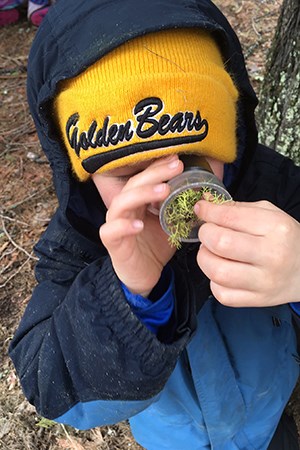
NPS While immersed in nature, students will focus on sensory exploration and making observations of natural items. All activities should focus on helping the students think about answering the question “What are ‘senses’ and how do they help me and other living things to survive?” The students will practice using their senses out in nature or with natural objects to make observations and realize that this is a key way for people to learn—the main way that Blackfeet, Salish, Pend d’Oreille and Kootenai people learned before there were books or school. They’ll also wonder at how other living things have different senses (sometimes much better!) than ours. Grade: Kindergarten
National and State Science Standards:
ObjectivesThese are typical objectives that can be achieved on the sensory program depending on the ranger and the teacher’s pre- and post- lesson focus. Students will be able to:
Field Trip LogisticsTeachers wishing to have their students participate in the sensory field trip must have their classes divided into groups of no more than 20 students. For example, a bus of 40 students would be divided into 2 groups, of 18-20 students each. Each group would hike with a ranger and participate in stations at Apgar Nature Center. Everyone must be prepared to be outside for at least half the day and be ready to hike 0.75 miles on fairly level terrain. ***The ranger-guided portion of this field trip is ½ day only in Apgar. Teachers may remain in the park for the rest of the day to do independent activities. Rangers will be able to suggest ideas and provide materials for activities such as coloring, leaf prints, songs, and exploring with magnifying glasses. *** Reserve Your TripVisit the Scheduling & Guidelines page to find the reservation form as well as tips for a successful day in the park. If you have questions, email or call the Apgar Education Center at 406-888-7899. Preparing for Your TripStudents that spend time preparing for their visit get more out of a field trip to the park. Activities post-visit also help to reinforce information learned during the trip. Once registered, we will send you packet with the entire learning sequence. The packet will contain the following lessons:
Suggested supplementary materials: |
Last updated: May 27, 2020
